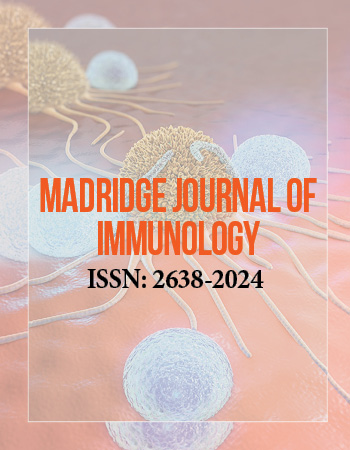International Conference on Immunology and Immunotechnology
November 1-3, 2017 Barcelona, Spain
TLR3 Elicits Constitutive HSV-1 Resistance in Human Cortical Neurons and Inducible Resistance in Trigeminal Neurons
1Department of Microbiology-Immunology, Northwestern University Feinberg School of Medicine, USA
2The Center for Stem Cell Biology, Sloan-Kettering Institute for Cancer Research, USA
3Developmental Biology Program, Sloan-Kettering Institute for Cancer Research, USA
4St. Giles Laboratory of Human Genetics of Infectious Diseases, Rockefeller Branch, The Rockefeller University, USA
5Division of Immunology, Boston Childrenʼs Hospital, USA
6Laboratory of Human Genetics of Infectious Diseases, Necker Hospital for Sick Children, France
7Paris Descartes Université, Imagine Institute, Paris, France
8Howard Hughes Medical Institute, USA
9Pediatric Hematology-Immunology Unit, Necker Hospital for Sick Children, France
Background: HSV-1 infections of the central nervous system are associated with life-threatening Herpes Simplex Encephalitis (HSE). Inborn errors in Toll like receptor 3 (TLR3) increase susceptibility to HSE. This study investigates the role of TLR3 in restricting HSV-1 infection using human iPSC-derived neuronal culture models.
Methods: We examined the mechanisms by which TLR3 protects human neurons from HSV-1 infection. Induced pluripotent stem cell derived trigeminal and cortical neurons obtained from TLR3 and STAT-1 deficient patients, and healthy controls, were infected with recombinant strains of HSV-1. Viral entry, retrograde axonal transport, and gene expression were assessed.
Results: Our studies indicate that control cortical neurons exhibit TLR3-dependent constitutive resistance to HSV-1 that manifested from blockades in viral entry and retrograde axonal transport. STAT-1 was dispensable for constitutive resistance to HSV-1. TLR3-deficient cortical neurons revealed that HSV-1 entry occurred by transient endocytosis followed by bafilomycin-sensitive membrane fusion to release capsids into the cytosol. In contrast to cortical neurons, TLR3-dependent resistance in trigeminal neurons required advanced stimulation to establish an antiviral state prior to HSV-1 challenge.
Conclusions: Human iPSC-derived cortical and trigeminal neurons accurately model the selective neurotropic properties of HSV-1 exhibited in vivo. Absence of functional TLR3 results in cortical neuron infection in culture that is consistent with the presentation of HSE in TLR3-deficient patients. We propose that the rapid and constitutive TLR3-based resistance to HSV-1 exhibited in iPSC-derived cortical neurons underlies HSV-1ʼs selective neurotropism for the human peripheral nervous system.


